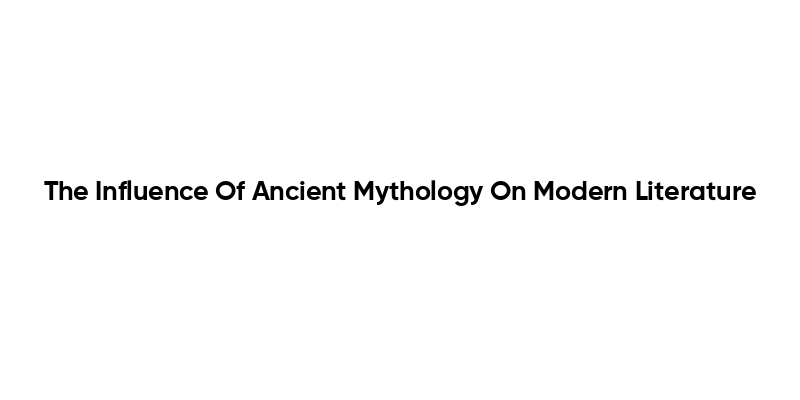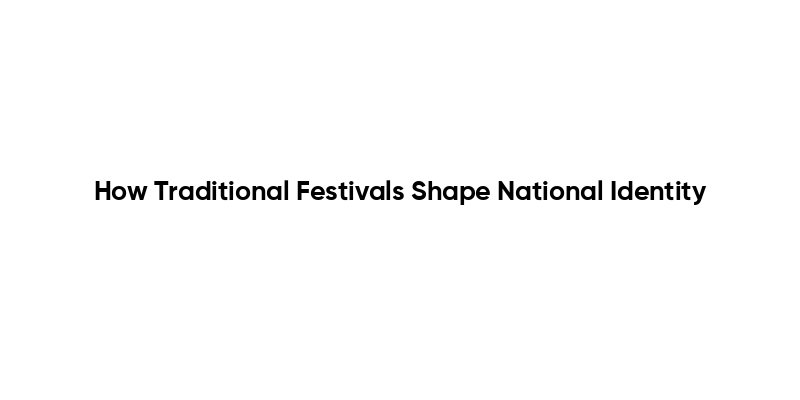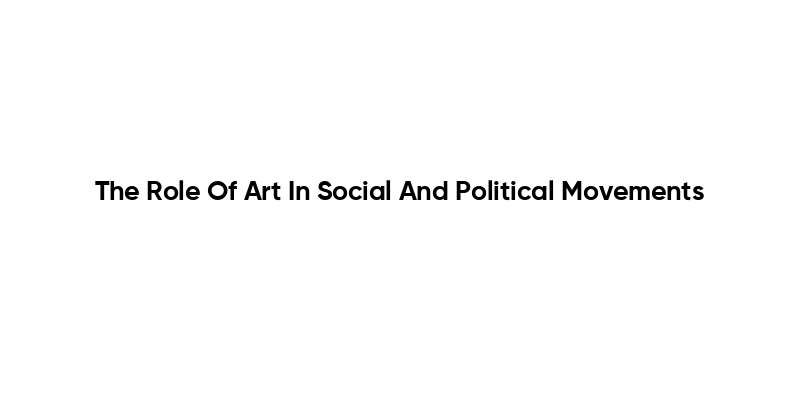Ancient mythology has long served as a wellspring of inspiration for modern literature, shaping narratives and character archetypes that continue to resonate with readers today. The Influence Of Ancient Mythology On Modern Literature is a fascinating exploration of how timeless myths from cultures around the world have been woven into contemporary storytelling. From the epic tales of Greek and Roman gods to the rich folklore of indigenous peoples, these ancient stories provide a framework for understanding human experience, morality, and the complexities of life.
In this article, we will delve into the various ways ancient myths have influenced modern literary works, examining key themes such as heroism, love, and the struggle between good and evil. You will discover how authors like James Joyce, Margaret Atwood, and Neil Gaiman have drawn upon mythological elements to enrich their narratives and create deeper connections with their audiences. Furthermore, we will analyze the enduring relevance of these myths in addressing contemporary issues, illustrating how they continue to shape our understanding of identity and culture.
As we journey through the intricate relationship between ancient mythology and modern literature, you will gain insights into the symbolic meanings behind familiar stories and characters. Whether you are a literature enthusiast or simply curious about the power of storytelling, this exploration promises to illuminate the profound impact of ancient myths on the literary landscape. Join us as we uncover the threads that link the past to the present, and discover why these age-old tales remain vital in today’s literary discourse.
Archetypes and Character Development
Ancient mythology has profoundly influenced the archetypes found in modern literature. Characters such as the hero, the mentor, and the trickster can be traced back to mythological figures like Hercules, Merlin, and Loki. These archetypes serve as foundational elements in storytelling, allowing authors to create relatable and compelling characters that resonate with readers. By utilizing these archetypes, modern writers can tap into a rich tradition of storytelling that has stood the test of time.
Moreover, the use of archetypes helps to establish a connection between the reader and the narrative. For instance, the hero’s journey, a common theme in both ancient myths and contemporary literature, illustrates the struggles and triumphs of the protagonist. This narrative structure not only captivates the audience but also reflects universal human experiences, making the stories more impactful and memorable.
Themes of Fate and Free Will
The exploration of fate and free will is a recurring theme in both ancient mythology and modern literature. In myths, characters often grapple with their destinies, as seen in the tales of Oedipus and Achilles. These stories raise questions about the extent to which individuals can control their lives versus being subject to predetermined fates. Modern authors continue to explore these themes, often reflecting societal concerns about autonomy and choice.
For example, in contemporary novels, characters may face dilemmas that echo the struggles of mythological figures, prompting readers to consider their own beliefs about fate and free will. This thematic continuity not only enriches the narrative but also invites deeper philosophical discussions, making literature a powerful medium for exploring complex human experiences.
Symbolism and Imagery
Symbolism and imagery derived from ancient mythology are prevalent in modern literature, enhancing the depth and richness of narratives. Mythological symbols, such as the phoenix representing rebirth or the labyrinth symbolizing a journey of self-discovery, are often employed by authors to convey complex ideas and emotions. These symbols resonate with readers, as they evoke a sense of familiarity and connection to the mythological past.
Additionally, the use of vivid imagery rooted in mythology can create a more immersive reading experience. For instance, descriptions of mythical landscapes or creatures can transport readers to fantastical realms, allowing them to engage with the story on a sensory level. This interplay between symbolism and imagery not only captivates the audience but also reinforces the themes and messages within the narrative.
Intertextuality and Allusions
Intertextuality, the relationship between texts, is a significant aspect of modern literature influenced by ancient mythology. Many contemporary authors make deliberate allusions to mythological stories, characters, and themes, creating a dialogue between the past and present. This practice enriches the reading experience, as readers familiar with the original myths can appreciate the layers of meaning embedded in the text.
For instance, works like “The Penelopiad” by Margaret Atwood reimagine the story of Odysseus from the perspective of his wife, Penelope. Such retellings not only highlight the relevance of ancient myths in contemporary contexts but also challenge traditional narratives, offering fresh insights into well-known tales. This intertextual approach fosters a deeper understanding of both the original myths and the modern interpretations, showcasing the enduring influence of mythology on literature.
Cultural Reflection and Social Commentary
Ancient mythology often reflects the values, beliefs, and social structures of the cultures from which they originated. Similarly, modern literature frequently uses mythological references to comment on contemporary societal issues. By drawing parallels between ancient myths and modern dilemmas, authors can critique current social norms and provoke thought among readers.
For example, novels that incorporate mythological elements may address themes such as power dynamics, gender roles, and moral dilemmas, mirroring the complexities of today’s world. This cultural reflection not only highlights the relevance of ancient mythology but also encourages readers to engage with pressing social issues through the lens of storytelling. As a result, literature becomes a powerful tool for both entertainment and social critique, bridging the gap between the past and present.
Ancient mythology has played a significant role in shaping modern literature. The themes, characters, and narratives from ancient myths continue to resonate in contemporary works, providing depth and context to modern storytelling. This article explores the various ways in which ancient mythology influences modern literature.
| Aspect | Description |
|---|---|
| Character Archetypes | Many modern literary characters are based on archetypes found in ancient myths, such as the hero, the trickster, and the wise old man. These archetypes help to create relatable and compelling characters. |
| Themes | Common themes from ancient mythology, such as the struggle between good and evil, the quest for knowledge, and the exploration of human nature, are prevalent in modern literature. |
| Symbolism | Mythological symbols, such as the phoenix representing rebirth or the labyrinth symbolizing a journey of self-discovery, are often used in modern texts to convey deeper meanings. |
| Intertextuality | Modern authors frequently reference ancient myths in their works, creating layers of meaning and connecting their narratives to a broader literary tradition. |
| Genre Influence | Genres such as fantasy and science fiction often draw heavily from mythological elements, incorporating gods, monsters, and epic quests into their narratives. |
| Psychological Insights | Mythology provides insights into the human psyche, as seen in works that explore themes of identity, morality, and the subconscious, often drawing on Carl Jung’s theories of archetypes. |
In conclusion, the influence of ancient mythology on modern literature is profound and multifaceted. By understanding these connections, readers can gain a deeper appreciation for contemporary works and the timeless stories that continue to shape our narratives.



